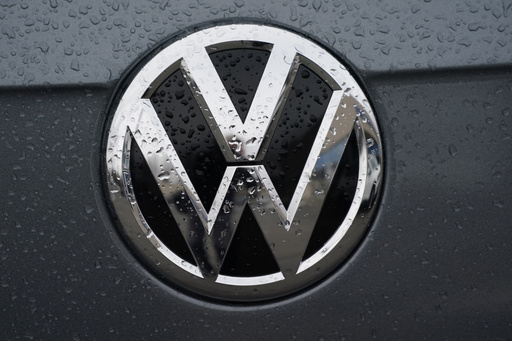
BANGKOK — Volkswagen and SAIC Motor from Shanghai have reached an agreement to divest a manufacturing facility located in the Xinjiang region of China, a site that has faced scrutiny and condemnation from western nations due to alleged human rights abuses.
On Wednesday, both companies also announced an early extension of their longstanding automotive joint venture, which has been operating for four decades, now set to continue until 2040. This partnership will increasingly focus on the transition to electric vehicles (EVs).
Volkswagen AG was among the earliest foreign players to enter China’s automotive market. The joint venture’s production of the Santana sedan, which launched in the 1980s, became a staple in taxi services across Shanghai and other urban centers for numerous years. SAIC claims to be China’s largest automotive manufacturer, producing approximately 5 million vehicles in 2023, and has additional partnerships with other prominent automakers like General Motors.
Earlier in the year, the Volkswagen Group—which includes brands such as Audi and Porsche—announced plans to introduce 40 new vehicle models in China over the next three years and aims to have around 30 electric vehicles by 2030. On the same day, the company revealed that the SAIC Volkswagen joint venture intends to roll out 18 new models by 2030, which will comprise eight electric vehicles.
Like many international car manufacturers, Volkswagen has found itself challenged by the rapid growth of the electric vehicle market in China, which is now the largest globally and has undergone significant changes over the past three years.
The joint venture’s plant in Urumqi, the capital of Xinjiang, will be transferred to the Shanghai Motor Vehicle Inspection Center, while ensuring that around 170 employees currently working there will retain their positions. Additionally, the joint venture has sold off test tracks located in Turpan, Xinjiang, and Anting, a suburb of Shanghai.
In light of the backlash concerning its operations in Xinjiang, Volkswagen previously stated that an independent audit it commissioned found no evidence of forced labor at the site, though the company was reevaluating its operational strategies.
This production facility, managed by a SAIC-VW subsidiary, began operations in 2013 and reached a peak capacity of 50,000 vehicles; however, it has since ceased vehicle manufacturing and now focuses solely on inspections.
The reorganization of the Volkswagen-SAIC joint venture occurs amid rising uncertainty about production costs and market access, particularly with the potential for western governments to implement increased tariffs on electric vehicles imported from China.
